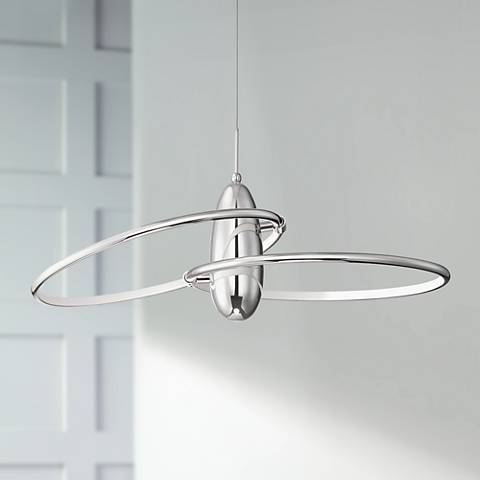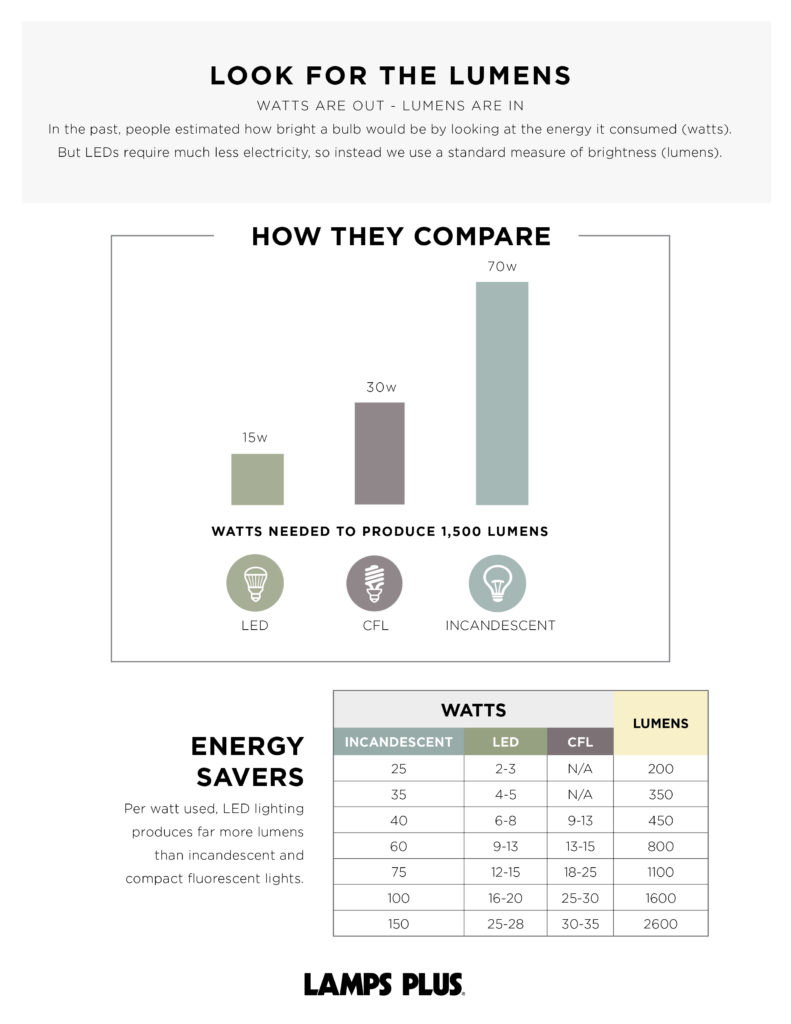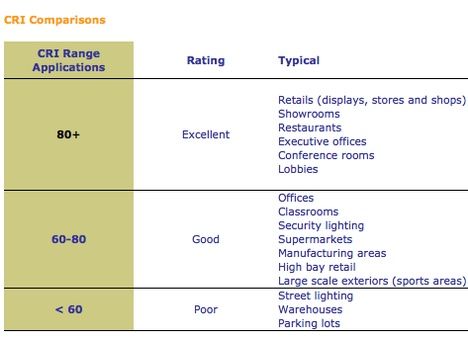How to Buy LED Lighting

The energy-efficient solution for lighting, LEDs provide the illumination you need without consuming the same power as regular incandescent bulbs.
In this LED lighting buying guide, you’ll learn not only the many benefits of light-emitting diodes (LEDs), but also how to decipher everything from watts and lumens to CRI. You’ll also get practical, expert tips on how to update your current lighting fixtures with the right LEDs.
The Benefits of LEDs
LEDs come with three major advantages over incandescent bulbs. The benefits of LEDs include the following:
- Save Money: LEDs are up to 10 times more efficient than incandescent bulbs. This means they use less energy (about 75 percent less), which in turn saves you money.
- Long Life: Compared to incandescent lighting, LEDs live up to 25 times longer. A longer lifespan translates to fewer bulb changes.
- Super Versatile: Unprecedented shapes, multi-color options, and a range of color temperatures make LED perfect for all your lighting needs. This means you can replace your 40-watt or even 75-watt incandescent bulb with an LED equivalent that provides the same color and brightness you want without consuming the same amount of energy.
Warm or Cold Lighting? It’s All in the Color Temperature
Color temperature is a standard measurement of a light’s appearance — what we generally refer to as the “warm” or “cool” look of a light.
Different types of LEDs can reproduce a wide range of color temperatures, so follow this simple light bulb color temperature guideline when shopping:

For more details, read our article about LED and color temperature.
Brightness? Think in Lumens, Not Watts
“Lumens” is a measurement of the brightness of a light or bulb. “Watts,” on the other hand, is the measurement of electricity used to power a light or bulb.
In the past, most people (erroneously) judged a bulb’s brightness by watts. However, because LEDs are so much more efficient, that wattage/brightness correlation isn’t accurate. So now, if you want to know how bright a light is, look at its lumens.
Use this chart to help estimate how bright different levels of lumens are:

Seeing Color – All about CRI
CRI (Color Rendering Index) is the measurement of how well a light source renders color. Under lights with high CRI, reds will appear red, greens will appear green, and so on.
CRI ratings range from 0-100. In general, the higher quality the LED, the higher the CRI.
For best results, look for LEDs with CRI ratings between 90 and 100.
For comparison, the noon sun has a CRI of 100; orange-tinted streetlights typically have a low CRI around 25.

Is LED lighting dimmable? Yes, but…
With LEDs there are just a few things to keep in mind when using a dimmer:
First, make sure your LED fixture (or bulb) is dimmable.
Second, use only LED compatible dimmers to prevent flickering and abnormal wear on the light. Older dimmer switches are often not compatible with LED lights.
The Difference Between LED Bulbs and Integrated Arrays
There are two different types of LED lighting:
- LED Bulbs: Simply use these in place of your existing lightbulbs. LED alternatives are available for most commonly used incandescent bulbs…even Edison bulbs! needs photo
- Built-In or Integrated LEDs: On some lamps and fixtures, the LED light source is built right into the design. These “integrated” LEDs allow for innovative designs and shapes that were once unthinkable.
Where to Use LED? Anywhere!
LEDs look great and are so versatile, you can use them anywhere. Still, there are a few places in particular where LED really outshines all the rest:
- LED Desk Lamps: LED offers a bright, clear light. Look for designs with variable color temperature to help reduce eye fatigue.
- Outdoor LED Lighting: LED’s long lifespan means fewer bulb changes in those hard-to-reach places.
- LED Chandeliers: Just like with outdoor lighting, pesky chandelier bulb changes are fewer and farther between with long-lasting LEDs.
- LED Table Lamps: The easy way to upgrade! Simply replace your existing bulbs with LED bulbs.
- Best LED Lighting Strips: Ideal for under cabinet lighting, these DIY install easily and plug into a wall outlet.
As you can see, LED is quickly revolutionizing home lighting, offering a more cost-efficient, greener and safer way to light our homes and offices. For more about LED lighting, including a fascinating description of the technology that makes it all possible, check out how an LED bulb works.
More LED Ideas and Advice
LED Ceiling Lights for Small Spaces
